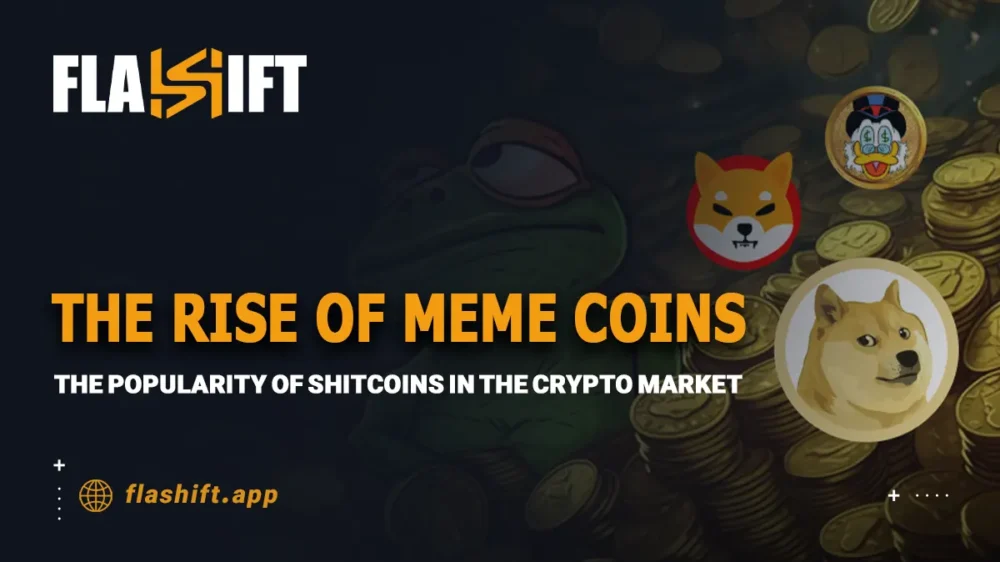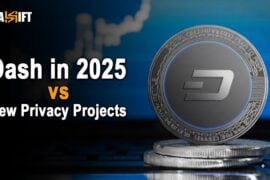- Introduction to Meme Coins and Shitcoins
- Historical Emergence of Meme Coins
- The Evolution of Meme Coins
- Meme Coins vs. Utility Coins: What’s the Difference?
- Factors Driving the Popularity of Shitcoins
- Risks and Challenges Associated with Investing in Shitcoins
- Case Studies of Notable Meme Coins
- The Future of Meme Coins in the Crypto Market
- Conclusion: Navigating the Meme Coin Phenomenon
- FAQ
The Rise of Meme Coins | In the fast-evolving world of cryptocurrency, one unexpected trend has captured the collective imagination of investors and internet culture: meme coins. From Dogecoin’s unlikely rise to the emergence of an untold number of other “shitcoins,” these digital assets often start as a joke yet somehow manage to rally on the market. But what fuels their popularity? Why do they continue to gain momentum despite skepticism from financial experts? This article takes a deep dive into the quirky, yet compelling phenomenon of meme coins, studying their origins, cultural appeal, and the risks and rewards they bring into the crypto market.
Introduction to Meme Coins and Shitcoins
The subsets of meme coins and shitcoins are interesting in cryptocurrency. Blending humor with speculation and the viral power of the internet, the named variations create quite a fascinating study in contrasts. Meme coins are a class of cryptocurrency based on an internet meme, pop culture, or other social phenomenon. Often possessing lighthearted branding, their popularity typically results from community-driven hype or celebrity endorsements rather than inherent utility. For example, Dogecoin started as a joke, based on the meme “Doge,” yet has grown into a globally recognized cryptocurrency with an enormous following.
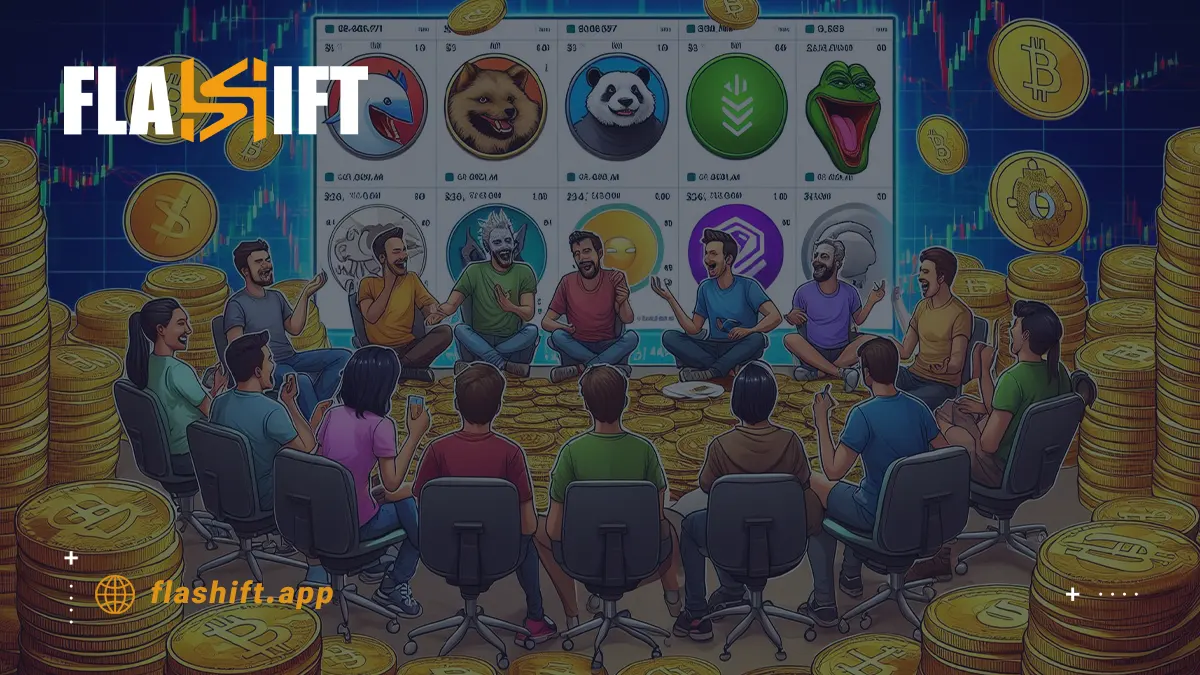
Shitcoins are a catch-all, more contentious category. The term generally describes cryptocurrencies with little value, utility, or long-term potential. They are often created to ride the market trends or speculative frenzy, thus hazardous investments. Most shitcoins are, due to their lack of seriousness or development, intertwined with meme coins, though not all meme coins should be considered shitcoins since a number of them attain durable market relevance or community support.
Taken together, these cryptocurrencies challenge the conventional notions of value and investment in crypto. Critics may dismiss them as frivolous or harmful, but their ability to capture the public imagination and drive substantial market activity suggests a cultural and financial phenomenon worth delving into.
Historical Emergence of Meme Coins
The emergence of meme coins in the cryptocurrency landscape has its roots in the 2013 creation of Dogecoin. Originally designed as a parody of Bitcoin and the burgeoning crypto market, Dogecoin was inspired by the popular “Doge” meme- a Shiba Inu dog with humorous captions in Comic Sans font. Founded by software engineers Billy Markus and Jackson Palmer, Dogecoin was created almost as an antithesis to most cryptocurrencies with these profound, philosophical messages. In contrast, DOGE came with its light-hearted and humorous tone. Its non-serious nature and dynamic community helped this cryptocurrency become an overnight sensation trendsetter for a whole category of meme cryptocurrencies.
In the wake of Dogecoin, the crypto market exploded with other meme coins, each relying on humor, pop culture, or niche internet communities to spread. Meme coins finally began making it big in the 2020s, led by viral social media marketing campaigns, celebrity endorsements, and DeFi platforms, making it more possible for new tokens to be easily created and traded. Shiba Inu was a hard fork of the “Dogecoin killer,” which gained prominence as a direct competitor, riding on the coattails of the popularity of Dogecoin while introducing additional features like staking and a decentralized exchange.
Recent trends have seen the emergence of increasingly niche and absurd meme coins, such as those themed around frogs, foods, or viral internet challenges. These coins often rely on speculative hype and a sense of FOMO (fear of missing out) to drive their rapid rise—and sometimes equally rapid fall. But despite their dubious value, meme coins’ cultural and financial impact underlines a peculiar role in merging internet culture with speculative finance to create a new kind of digital gold rush.
To exchange Tether (USDTERC20) to Dogecoin (DOGE) in one second, Flashift is the easiest way.
The Evolution of Meme Coins
Meme coins, once regarded merely as humorous side projects, are now undergoing significant transformations that push them into the realm of practical applications. For instance, Shiba Inu’s ecosystem exemplifies this evolution by introducing decentralized finance (DeFi) tools such as ShibaSwap, offering functionalities like staking, trading, and rewards for its holders. This development signals a shift from their initial “joke” origins toward providing tangible use cases that appeal not only to speculative retail investors but also to developers and even institutional players seeking exposure to community-driven projects. Moreover, the success of meme coins in fostering innovation extends beyond their immediate platforms—many inspire advancements in tokenomics, gamification, and decentralized governance models that ripple across the broader cryptocurrency landscape.
These community-centric projects showcase a compelling ability to bring blockchain technology into mainstream consciousness while redefining the engagement model of crypto assets. As traditional cryptocurrencies grapple with scalability and adoption hurdles, meme coins demonstrate that grassroots movements powered by humor and shared identities can evolve into collaborative forces driving innovation. In doing so, these projects are reshaping perceptions of digital finance, proving that even the most lighthearted ideas have the potential to leave a lasting impact on an industry at the forefront of technological change.
Meme Coins vs. Utility Coins: What’s the Difference?
Not all cryptocurrencies are created equal. To understand the rise of meme coins, it’s important to see how they differ from utility-focused cryptocurrencies.
Meme Coins
- Purpose: Built primarily for fun, hype, and community culture.
- Examples: Dogecoin, Shiba Inu, and newer Solana-based coins like Dogwifhat and TrumpDoge.
- Strengths: Viral marketing, strong community engagement, fast gains during hype cycles.
- Weaknesses: Often lack real-world use cases, making them highly speculative and prone to pump-and-dump cycles.
Utility Coins
- Purpose: Designed with a specific function within a blockchain ecosystem.
- Examples: Ethereum (ETH) powers smart contracts, Polygon (MATIC) scales transactions, Chainlink (LINK) provides data feeds.
- Strengths: Backed by technology, partnerships, and long-term adoption potential.
- Weaknesses: Growth can be slower compared to the viral spikes of meme coins.
Why This Matters in 2025
- For traders: Meme coins can deliver quick wins but also sudden losses. Utility coins are usually safer for long-term holding.
- For U.S. investors: Regulators view meme coins as high risk, while utility coins often have clearer compliance paths.
- For strategy: The smartest approach is to balance, explore meme coins for fun, but rely on utility coins for sustainable value.
With platforms like Flashift, you can swap between meme coins and utility coins instantly, giving you the flexibility to ride the hype while staying grounded in long-term projects.
Factors Driving the Popularity of Shitcoins
The rise of shitcoins-very often coinciding with meme coins-is a fascinating phenomenon driven by several interwoven factors, which range from the influence of social media to the power of online communities and speculation associated with high-risk investments. Together, these elements create a fertile environment for these cryptocurrencies’ rapid rise and often fall despite their lack of intrinsic value or utility.
-
Social Media Influence
Social media platforms have played a significant role in making shitcoins and meme coins popular. Through viral campaigns, influencer endorsements, and meme-driven humor, people learn about and are instantly excited over new tokens. Platforms like Twitter, Reddit, and TikTok help spread the word about these coins, using humor or novelty to grab the public’s attention. Notable figures such as Elon Musk have fueled the craze; Musk’s tweets about Dogecoin, for instance, have caused dramatic price fluctuations, demonstrating the power of celebrity influence in the crypto market. Social media’s real-time nature allows trends to spread quickly, attracting new investors eager to capitalize on the hype.
-
Community Engagement
The success of many meme coins and shitcoins lies in the strength of their communities. Online forums such as Reddit’s r/cryptocurrency or r/wallstreetbets have collectively created excitement and camaraderie among their supporters. Often, these communities rally behind a coin, using humor and memes to create a narrative of shared identity and purpose. The participatory culture encourages holders to become marketers, spreading the word about their chosen coin and driving demand. Unlike traditional investments, the appeal of meme coins often lies beyond financial gain and is sometimes about being part of something fun and irreverent online.
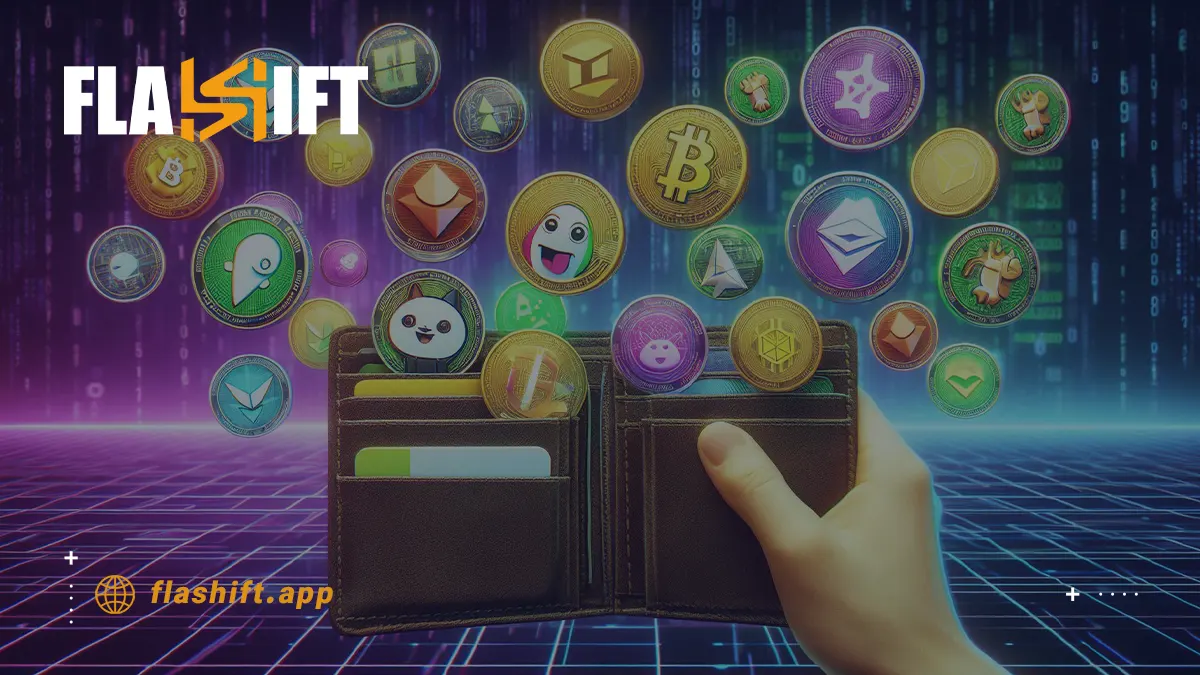
3. Speculative Investments and FOMO
One of the main reasons for the popularity of shitcoins is their speculative nature. Promising high returns in a very short period lures many investors into this type of coin. The low entry price of most meme coins creates an illusion of affordability, encouraging people to invest in hopes of hitting the jackpot. This speculative frenzy is amplified by FOMO’s fear of missing out as stories of early investors turning modest stakes into life-changing sums circulate online. But this speculative appeal comes with high risks, as most shitcoins lack sustainable value and are prone to rapid crashes.
-
Gamification of Finance
Meme coins and shitcoins will often succeed just because they gamify the investment. Their humorous branding, interactively marketed, and fast-moving prices make them much more of a game rather than a serious financial commitment. To younger investors, especially those with limited exposure to traditional finance, this may be an easier way to get into cryptocurrency. The gamified nature of meme coins aligns with the general trend of blurring the lines between entertainment and financial activities, from stock trading apps to NFT marketplaces.
-
Decentralization and Accessibility
DeFi platforms and cryptocurrency exchanges have made creating and trading meme coins easy. Anyone with basic programming knowledge can launch a token, which then gets listed on DEXs like Uniswap. It has also led to many new coins, all vying for a niche in the crowded market. This low barrier to entry by creators and investors contributes to the constant buzz of excitement over new shitcoins.
In the final analysis, bitcoins and meme coins’ popularity speaks to the sweet spot wherein social media virality is married with strong community dynamics, speculative fervor, and gamification of finance. The things that make them so exciting and highly visible also illustrate the implicit risk of investing in worthless assets. Nevertheless, their cultural importance cannot go unnoticed; they reflect how the culture of the digital does, with a significant chunk of the action, intersect via decentralized technologies in modern-day finances.
Risks and Challenges Associated with Investing in Shitcoins
Investment in shitcoins, also called highly speculative and meme-driven cryptocurrencies, is generally associated with significant risks, which one should not evade. While their explosive popularity and potential for high returns can be enticing, there are obvious dangers in this class of assets that make shitcoins very volatile and unpredictable.
Among the key risks related to shitcoins lies the extreme volatility of their course. Unlike established cryptocurrencies, such as Bitcoin or Ethereum, shitcoins don’t have any stable foundation or broad-based adoption that could anchor their value. In most cases, their prices are dictated by speculation, social media trends, or celebrity endorsements. This makes them highly prone to sudden spikes and dramatic crashes, which may lead to huge losses among investors, especially those who buy at the peak of a hype cycle. Such coins’ rapid rise and fall often leaves late entrants holding assets rapidly losing value.
Another big challenge is a lack of intrinsic value behind most shitcoins. Whereas cryptocurrencies serve practical purposes-like smart contracts or decentralized finance solutions, shitcoins are often created without straightforward utility or long-term vision in mind. Their novelty or humor, rather than solutions to real-world issues, is their appeal. And that makes it difficult for them to stand independently, primarily dependent on continuous speculation and hype, which are not sustainable.
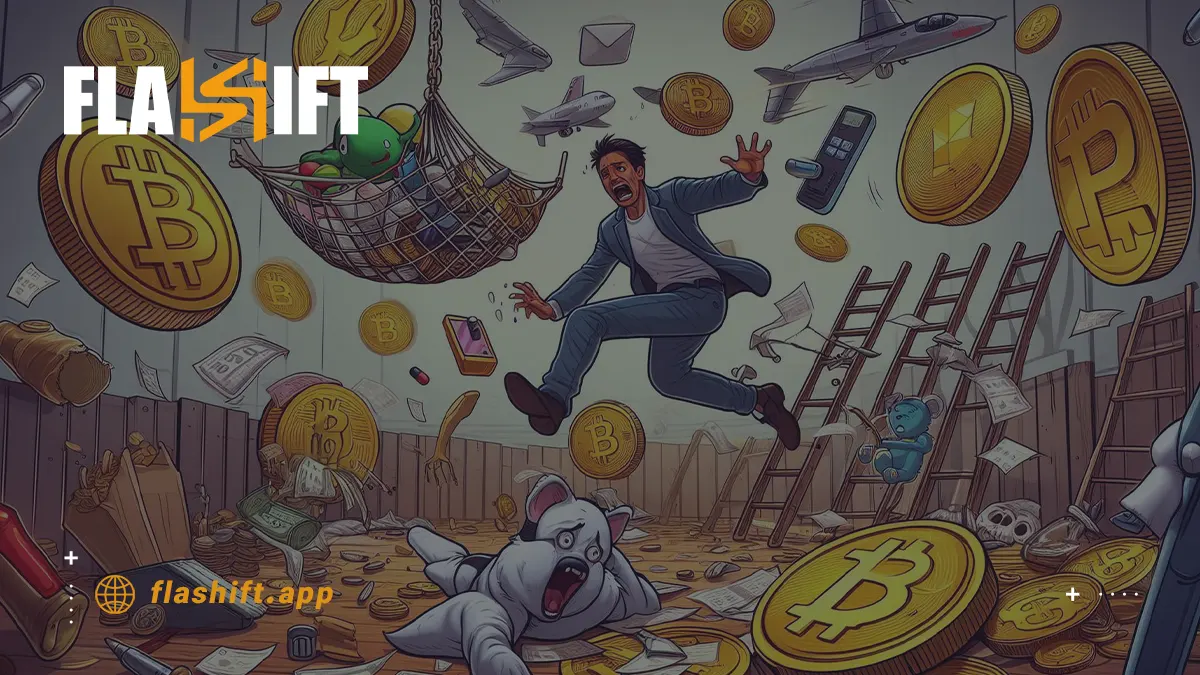
Adding to this, there’s a higher propensity for scams and fraudulent projects that create problems. With an open and almost negligible threshold in developing and listing new tokens, quite a few malicious entities are already interested in the meme coins euphoria for bad intentions. A specific class of scam known as “rug pull” is very disturbingly common, wherein the developers withdraw liquidity abruptly and then vanish with investors’ money. Moreover, some projects participate in pump-and-dump schemes, where they artificially inflate the price of a coin to attract unsophisticated investors before selling their holdings for a profit.
The lack of regulation in cryptocurrency exacerbates these challenges, leaving investors with limited recourse in the event of fraud or misconduct. Unlike traditional financial markets, which have regulatory bodies overseeing transactions and offering investor protections, the decentralized and often anonymous nature of shitcoin trading makes accountability or recovery challenging to enforce.
Ultimately, though they may be appealing to some for their potential for gains, investors need to take a more cautious approach. Volatility, no inherent value, and scams common in this market make shitcoins an intrinsically high-risk market. In short, research and a willing attitude toward the loss of all money are necessary ingredients for investing in this speculative asset. In the end, one should know the risks well before getting into the arena of shitcoins.
Case Studies of Notable Meme Coins
The rise of meme coins has redefined how cryptocurrencies capture public attention, blending humor, internet culture, and speculative fervor. Among the vast array of these coins, a few have achieved standout success, becoming cultural phenomena and significant players in the crypto market. Examining Dogecoin, Shiba Inu, and Pepe offers insights into the factors driving their popularity and impact on the crypto landscape and popular culture.
Dogecoin: The Pioneer of Meme Coins
Dogecoin, invented in 2013 by Billy Markus and Jackson Palmer, was the first-ever meme coin and template for its subsequent forks. Intended to poke fun at Bitcoin, it borrowed its theme from the “Doge” meme- a Shiba Inu dog with humorous, broken English captions. Despite being a joke, Dogecoin’s popularity quickly spread due to its active online community and lighthearted branding.
The coin went mainstream courtesy of high-profile endorsements again, with Musk playing a significant part through the spiking effects of his tweets. Dogecoin has become a very real meme of community finance: efforts like fundraising for charity included sponsoring a NASCAR driver and building clean water wells in Kenya. Less valuable than other cryptocurrencies due to its lack of a capped supply or advanced technology, the cultural impact and market capitalization of Dogecoin once exceeded $80 billion, making it an essential precursor to the meme coin phenomenon.
Shiba Inu: The “Dogecoin Killer”
Shiba Inu was designed in 2020 to ride the coattails of the Dogecoin frenzy while providing additional utility and features. Marked as the “Dogecoin killer,” the Shiba Inu coin also focuses on the Shiba Inu dog but positioned itself within a broader ecosystem that would include a decentralized exchange, ShibaSwap, with plans for NFT and gaming applications.
It has gained traction due to its aggressive marketing, affordable price of fractions of a cent, and viral social media campaigns. The ecosystem tokenomics, with a host of tokens such as SHIB, LEASH, and BONE, have made it a hot speculation destination, building a strong community often referred to as the “SHIB Army.” At the end of 2021, Shiba Inu saw a meteoric rise, briefly breaking into the top 10 cryptocurrencies by market capitalization. This proved that meme coins could grow from their joke origin, although many skeptics debate how long this can be sustained.
Pepe: Riding the Wave of Internet Culture
Pepe, inspired by the internet meme Pepe the Frog, is one of the most recent entrants to meme coins. Released in 2023, Pepe reflects the emerging trend for coins that link explicitly to some viral internet moments. In common with others, Pepe’s core strategy lies in the deep cultural resonance of its message and the thrill of speculation on Twitter and other platforms such as Reddit. Within weeks of its launch date, Pepe saw exponential growth as investors flocked looking to cash in on the hype.
But Pepe’s trajectory also highlighted the intrinsic risks of meme coins: rapid rises followed by sharp declines, a volatility characteristic of assets built on speculative fervor. Though it was a flash in the pan, Pepe proved how quickly internet culture can translate into market activity and further solidified the meme coin model as a recurring trend.
Impact on the Crypto Market and Beyond
These case studies show that meme coins have a two-sided impact on the cryptocurrency market and popular culture. The coins are often criticized due to their uselessness and high speculation. Yet, coins such as Dogecoin, Shiba Inu, and Pepe have introduced millions to cryptocurrency, creating enormous involvement and enthusiasm from the public. At the same time, they beg questions on sustainability, market manipulation, and the place of hype in shaping financial trends.
Ultimately, meme coins are a testament to the intersection of technology, humor, and human behavior: even the lightest ideas can make their mark on an ever-changing industry.
Read More: Top Cryptocurrencies by Growth in 2024: A Comprehensive Guide
The Future of Meme Coins in the Crypto Market
The future of meme coins in the cryptocurrency market is a topic of intrigue and uncertainty. While meme coins like Dogecoin, Shiba Inu, and Pepe have seen extraordinary growth driven by viral trends, speculative investments, and social media buzz, the question remains: Can these digital assets maintain relevance and achieve sustainable development, or will they ultimately decline as novelty fades?
Sustainability Challenges
In reality, there are several significant challenges that meme coins should surmount before they finally evolve from their speculative nature to sustainable long-term cryptocurrency. Most of the meme coins today lack intrinsic value. Unlike cryptocurrencies such as Bitcoin or Ethereum, which have established use cases, meme coins generally exist as novelty assets with little utility beyond their branding or community appeal. The meme coins would have to transition into providing value, like a platform, such as DeFi applications, NFTs, or blockchain-based services, to secure their place in the future of the crypto market. Without that, they will be labeled as speculative bubbles with no real substance to back them up.
The Role of Community and Cultural Influence
One such factor could be the continued strength of their communities. Sometimes, meme coins would succeed or fail with flying colors because of some passionate, almost cult-like followings. Dogecoin, for instance, saw significant rises, powered by a dedicated community that organized charity drives and claimed themselves to be “the people’s coin.” For meme coins to last longer, these communities must focus more on value creation with long-term engagement, not just hype. Melding culture and humor with cryptocurrency can continue to attract interest. Still, it must be matched by serious work on expanding the coin’s utility and integrating it into more prominent use cases.
Regulation and Market Maturity
This can also affect the future of meme coins, given that increasing attention has been given to regulating cryptocurrencies. Moving forward with more explicit crypto frameworks, governments, and financial institutions could bring more scrutiny upon meme coins. While some could sail through such regulations, many meme coins, particularly those made for a joke or just for short-term gain, face potential delisting by exchanges or regulatory hurdles. This may temper the phenomenal growth experienced late but could also sift out the chaff and stabilize the market. More regulation would eventually make for more mature, established, and reputable meme coins but also risk taming their anarchistic spirits of playfulness.
Integration into the Broader Crypto Ecosystem
The future viability of meme coins could also be pegged to their integration within the cryptocurrency ecosystem. Memecoin projects like Shiba Inu have taken steps in this direction: launching its decentralized exchange, ShibaSwap, and an NFT collection to create more use cases for its coin. Those meme coins that can finally pivot to more utility services in DeFi, NFT marketplaces, and even gaming ecosystems might find a niche that secures them for the longer term. On the other hand, meme coins that cannot adapt may see their popularity eventually fade as investors and users shift focus to more functional and secure projects.

Speculative Investments and the Rise of New Trends
Speculation will likely continue to be a driving force for meme coins, but new trends in the cryptocurrency space may also shape their future. The market is in constant flux, and what once was thought of as a meme-driven phenomenon could become a large part of the future structure of the crypto market. New forms of digital assets could be created, such as meme-based NFTs or tokens related to virtual worlds, which mix the power of humor with emerging technologies. As more institutional investors and established technology companies enter the market, meme coins could be embraced as a legitimate financial asset or relegated to the fringes as a flash in the pan.
The Decline of the Meme Coin Bubble?
Meme coin markets, as in the present world of cryptocurrencies, may collapse miserably. Many investors go with a meme coin project because they fear losing the opportunity to invest. Still, these coins can fall at any time due to corrections on account of coin speculation. A change in investor sentiment or a significant downturn in the market could let the air out of such hype, causing massive sell-offs. Furthermore, over-saturation with meme coins may lead to investor fatigue, whereby the novelty of investing in such coins no longer drives enthusiasm.
To Summarize
The future is not clear as far as the meme coins are concerned. Though they may thrive in the short term, their long-term success would depend on how their utility further evolves, how strong the communities are, and how they adapt to the maturing crypto market. Meme coins have no doubt left an indelible mark on the cryptocurrency space. Still, the challenge for them will be to transition from pure speculative assets into sustainable digital currencies. Their future will thus be shaped by their ability to evolve, innovate, and meet changing demands from investors and the crypto ecosystem.
Conclusion: Navigating the Meme Coin Phenomenon
Carefully consider entering the meme coin phenomenon at your own risk. Although in the public imagination, many meme currencies, such as Dogecoin, Shiba Inu, and Pepe, are driven more by speculation, social media trends, community-driven hype, and most definitely not intrinsic value and technological innovation. Simply put, investors want to know that meme coins carry high volatility and rapidly fluctuating prices because they are very risky. While the allure of a quick profit is excellent, it’s essential to approach the coins with caution, noting that their long-term viability remains uncertain.
If invested in meme coins, one has to employ a strategy focused on diversification and the management of risks. Only invest what you can afford to lose, and consider meme coins as part of a broader investment portfolio that includes more stable assets. Stay informed: Research the communities behind the coins and their potential for future development or utility. The most important thing is that investors should not let the fear of missing out carry them away and restrict the amount they will possibly stand to lose. In the same light, a volatile, speculative market calls for caution on two fronts: balanced perspective and emotional restraint in wading into the meme coin euphoria.
FAQ
- What are meme coins and shitcoins?
Meme coins are cryptocurrencies inspired by internet culture, often created for fun or as a joke. Shitcoins are generally low-value coins without any real utility, which are made chiefly for speculation or to ride on trends.
- Can meme coins be profitable?
While meme coins can have very rapid price increases based on social media or community hype, their volatility makes them highly speculative. Making a profit is possible but with considerable risk, and many investors incur losses.
- How did Dogecoin start the meme coin trend?
Dogecoin, launched in 2013, was created as a parody of Bitcoin, featuring the “Doge” meme. Despite its lighthearted beginnings, it gained popularity through its supportive community and high-profile endorsements.
- Which position did Shiba Inu take after Dogecoin?
Shiba Inu, released in 2020, was advertised as a “Dogecoin killer.” Like other meme coins, it rapidly attracted attention with its humor and community-driven energy.
- How does social media contribute to the popularity of meme coins?
Social media platforms such as Twitter and Reddit catalyze trends, leading to increased awareness of meme coins. Memes generally go viral, and Celebrity endorsements and internet culture contribute to their increased popularity.
6. Why would anybody invest in meme coins?
Investors are tempted mainly by the possibility of short-term gains, considering that these coins are speculative, driven by FOMO and hype in online communities.
7. What are the risks associated with shitcoins?
They have no intrinsic value and are super volatile. They usually depend on speculation rather than fundamental analysis, which brings wild swings and a high chance of losing money.
8. Are scams part of the meme coin market?
Yes, scams such as “rug pulls,” whereby developers abandon the project and disappear with investor funds, are common in the meme coin space due to the unregulated nature of the market.
- Can Meme coins scale up for a long term?
Realizing real utility and a step beyond mere speculation is when the sustained growth of meme coins will occur, and most of them currently lack just that. However, their future depends upon the extraordinary evolution of crypto markets and the continued strength of their communities.
- Will Meme Coins continue to conquer the Market?
Meme coins might still enjoy some success in the short run, but their long-term viability is yet to be seen. Meme coins could either fizzle out with time as the crypto market matures or evolve into functional assets if they can adjust to the changing market environment.


